Guitarist Jamie Hince, one half of the Kills, details the gear he and foil Alison Mosshart are touring with for their upcoming album, Ash & Ice. Hince changed his rig a bit since the last album (more amps and Bigsbys on everything), both for practical reasons—a hand injury which affected his playing style—and also because he was going for a cleaner tone.
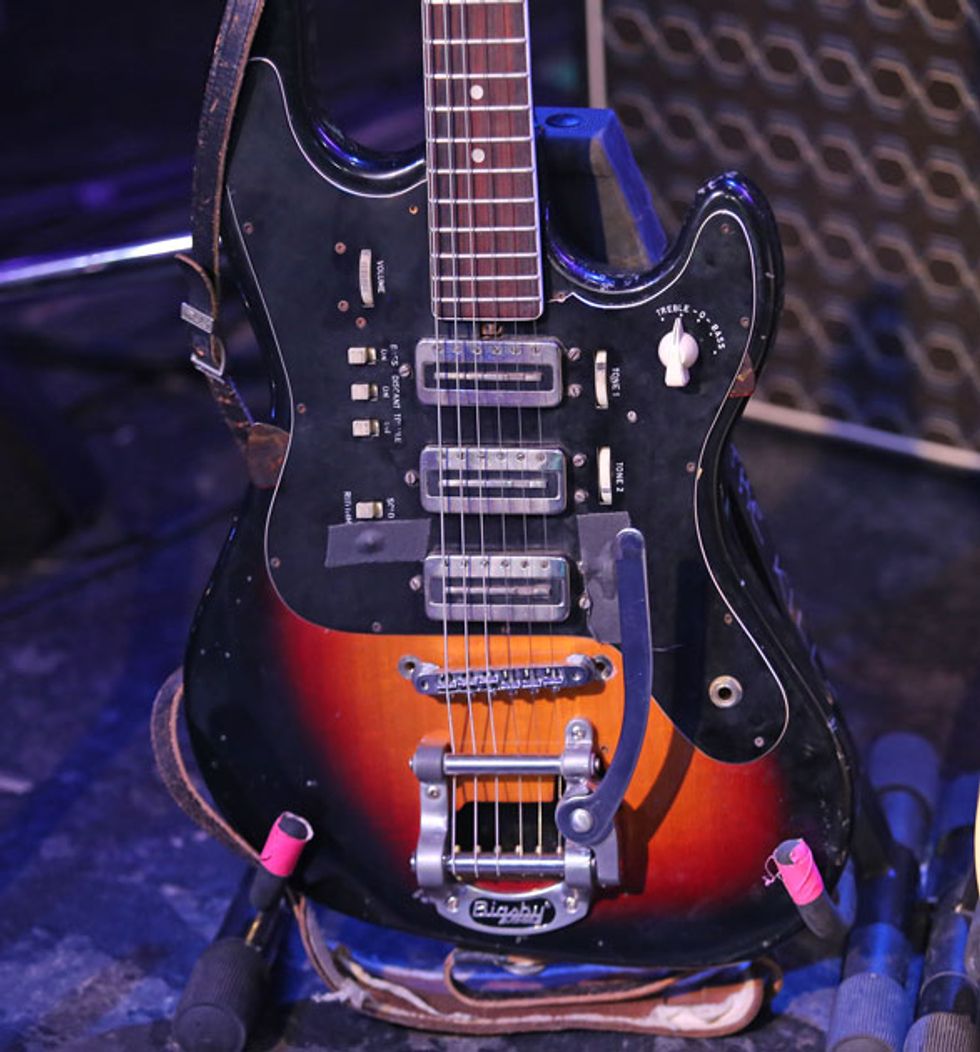
Hince has a large collection of Hofner 176 and Galaxie guitars, but this sunburst 176 is his No. 1. He swapped out the stock pickups and put in three single-coil “sharkfin” or “blade” pickups from a similar Galaxie model. “They’re just the greatest pickups I’ve ever heard,” says Hince. “I like a really clear, clean sound that’s just loud—kind of distorting because it’s so loud.” Hince now puts Bigsbys on all of his guitars to help with hand dexterity after an accident impaired the middle finger of his fretting hand. Hince uses the bridge and neck pickups mostly, as well as the Treble-O-Bass, which is a tremolo bass knob for overall tone and adding low end. He keeps several Hofner 176 axes on hand in different tunings, including standard, drop D, and C#.
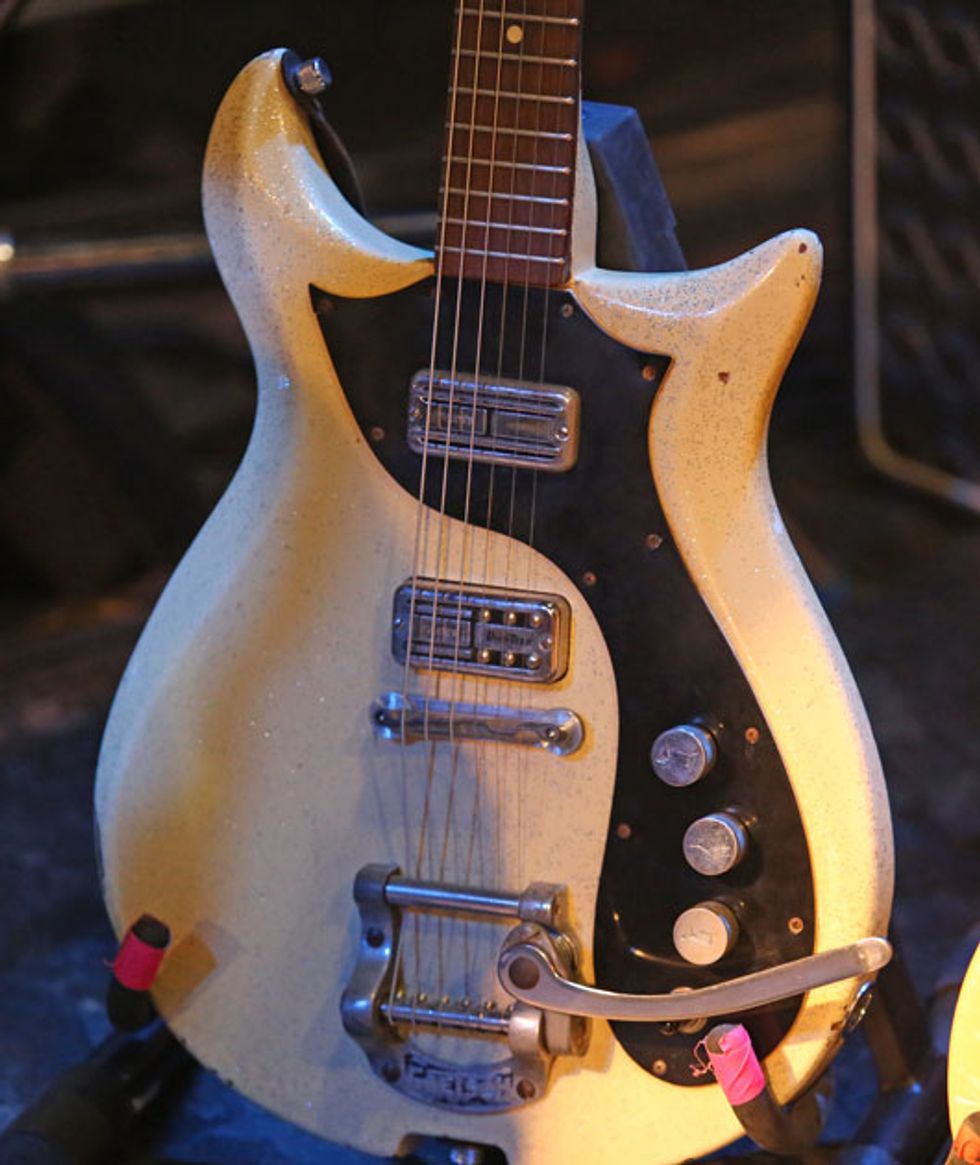
Hince’s Gretsch Silver Duke is dated 1966, the only year of production for this model. About 100 of these guitars were made. It has TV Jones Duo-Tron pickups and Hince believes this model was heavily influenced by Grestch’s Corvette model released in 1961 out of Brooklyn. “I like my guitars beaten up like this,” he adds.
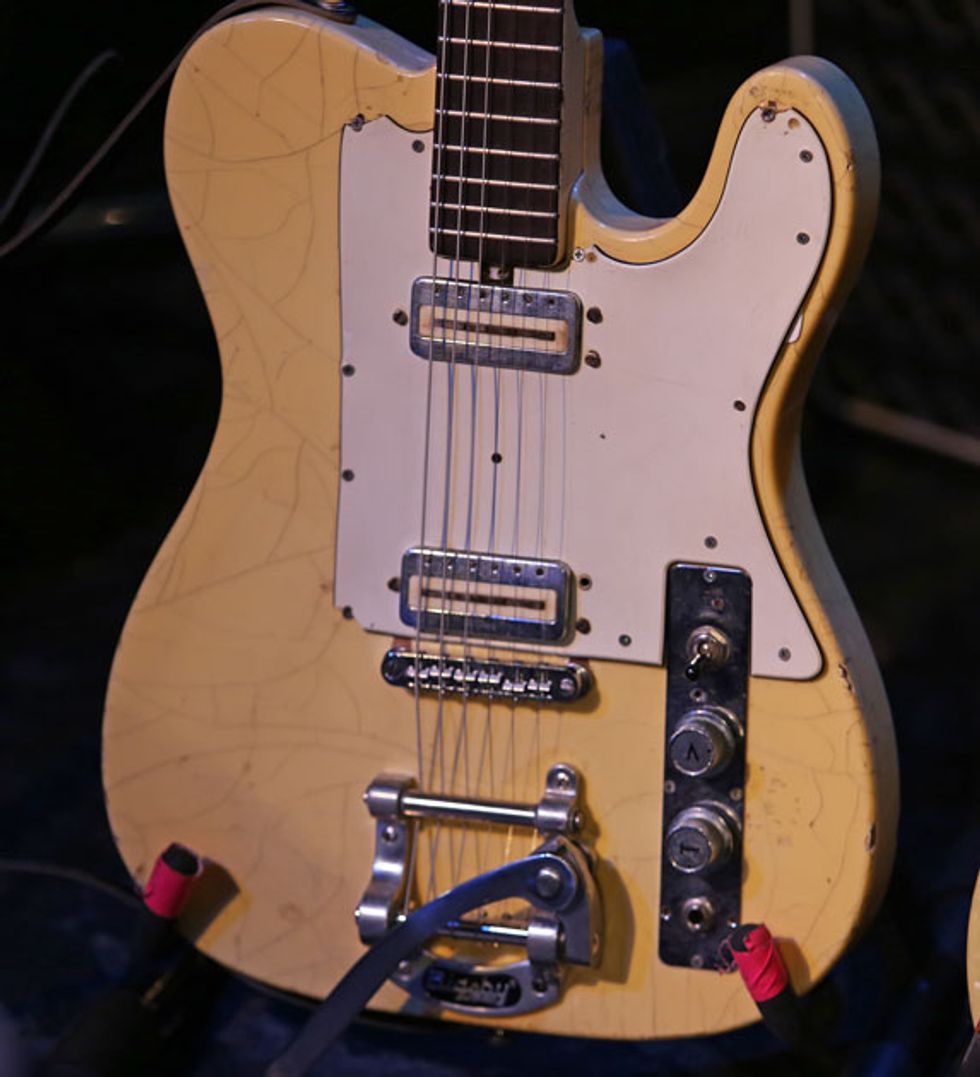
“I have so many Hofners,” says Hince. “They’re not made that well, but they sound fantastic, if you can battle away with them.” He added his secret weapon, the Hofner “sharkfin” pickups, to this T-Style. He uses .010–.052 gauge strings with high action to complement his percussive attack.
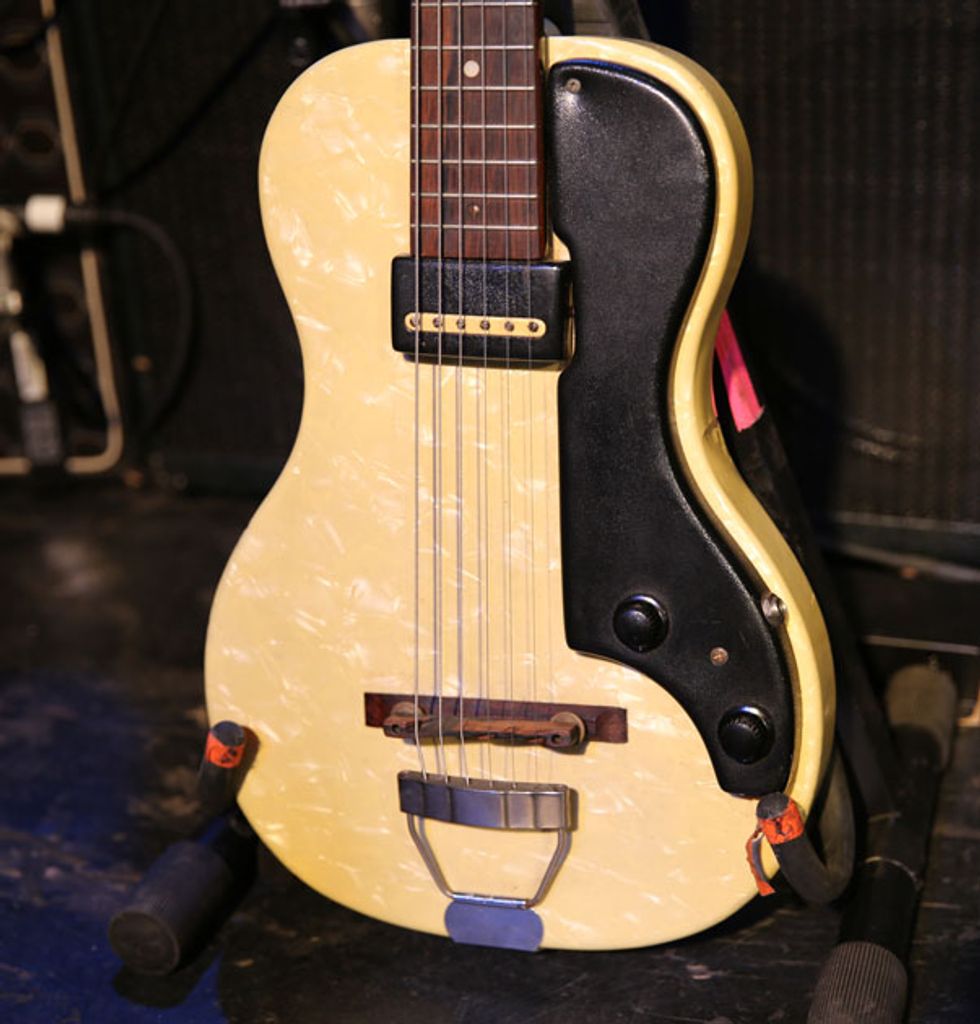
This Supro Ozark 1560S is the same model as Jimi Hendrix’s first guitar. Hince wrote the track “Siberian Nights” from Ash & Ice based on the sound of this guitar.
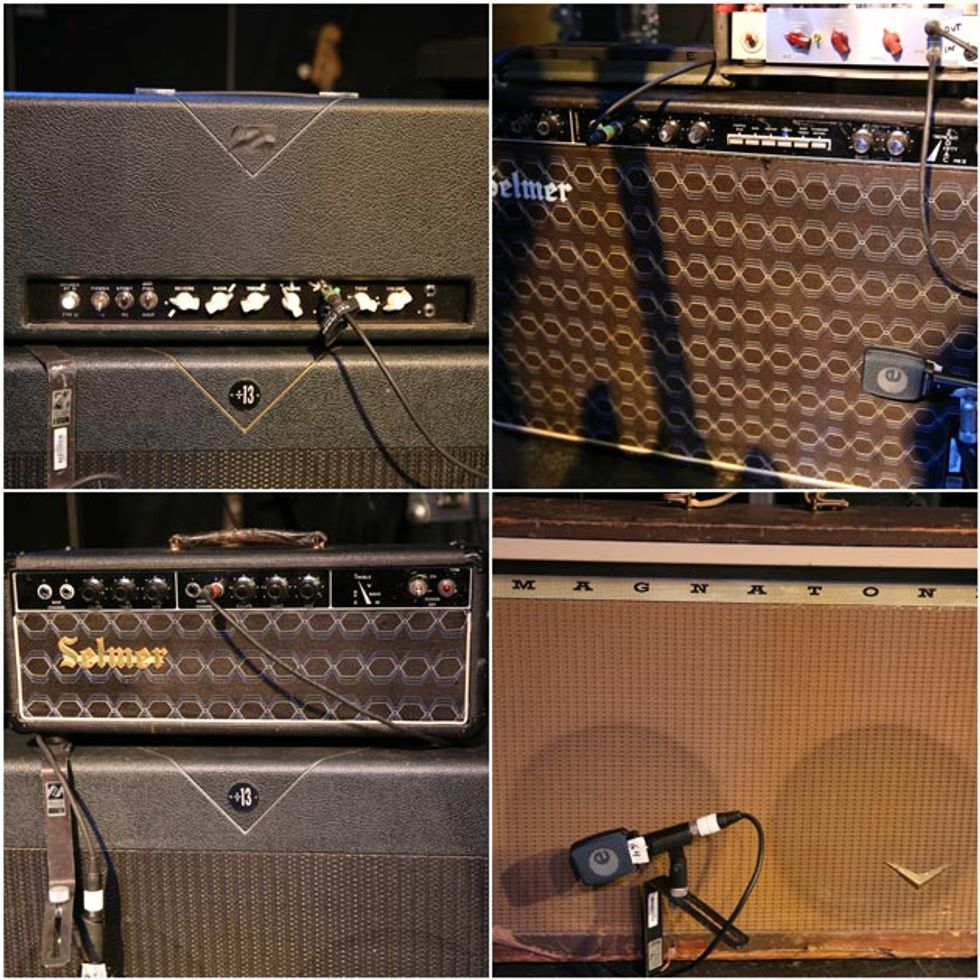
Hince has increased his previous two-amp setup to four amp combinations, all on, for a blended tone. He uses a Divided by 13 FTR 37 for a bright reverby sound, a Selmer Zodiac for cleans, a Selmer head with Divided by 13 cab for a wooly low end, and a 1950s Magnatone 280. “I can’t get the sound I want out of one amp, that’s why I use all these,” explains Hince. “It’s not for volume.”
Hince has been collecting Selmers since 1995, when he found three heads for 90 quids, or about $120. He now has about 10 Selmer heads. “They’ve got really beautiful British tone, loads of low end, and you can blend all that in.”
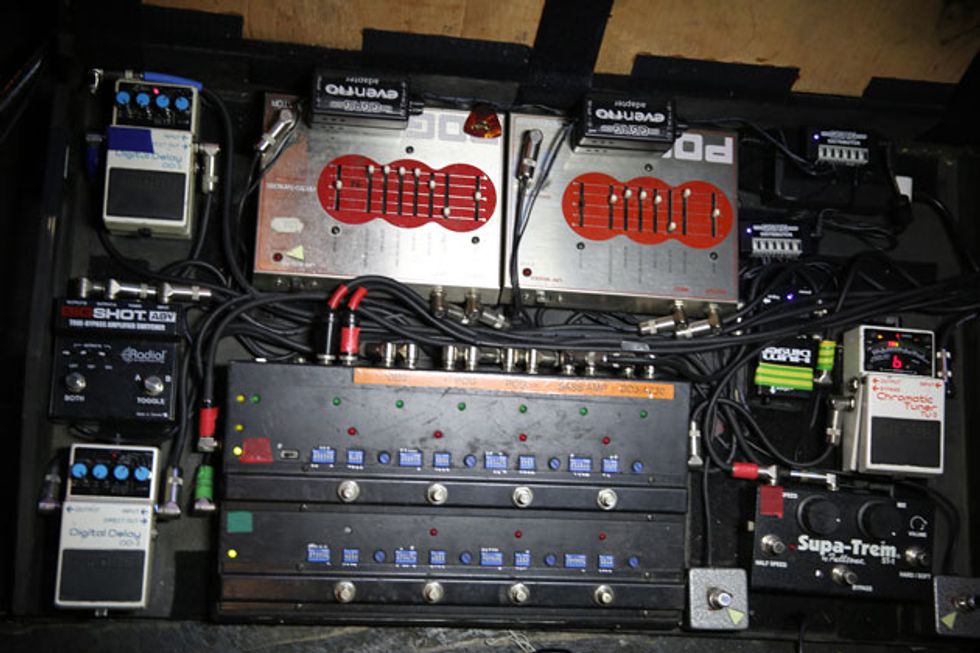
For dynamics, Hince’s pedalboard employs two first-generation Electro-Harmonix POGs for boost and octave shift. “I’m kind of over the POG now, it served me good for a couple records but I always like changing the sound. This album was about using different tone amps. The one I can’t live without is the Boss DD-3.” He uses two DD-3s for slapback delay sounds and a Fulltone Supa-Trem ST-1 for a nice variation in tremolo. Rounding out the board are a Radial BigShot ABY True Bypass Switcher, Boss TU-3 Chromatic Tuner, and several effects by The GigRig: a HumDinger, EvenFlo adapter, and a Distributor.

Alison Mosshart plays a Gretsch Corvette. Her main ride is outfitted with stars she applied when she dressed up for Halloween as the night sky and wanted her guitar to match.
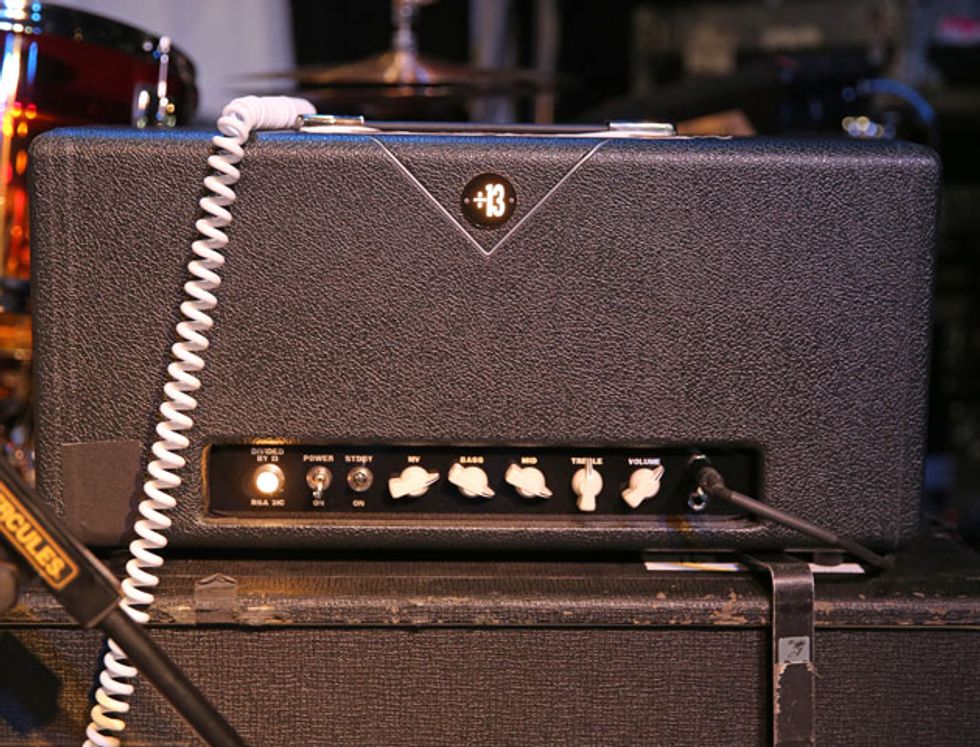
Mosshart plays a Divided by 13 RSA 31 through a vintage Vox cab that came with one of bandmate Hince’s first-ever amps: a super rare Vox AC50 head.
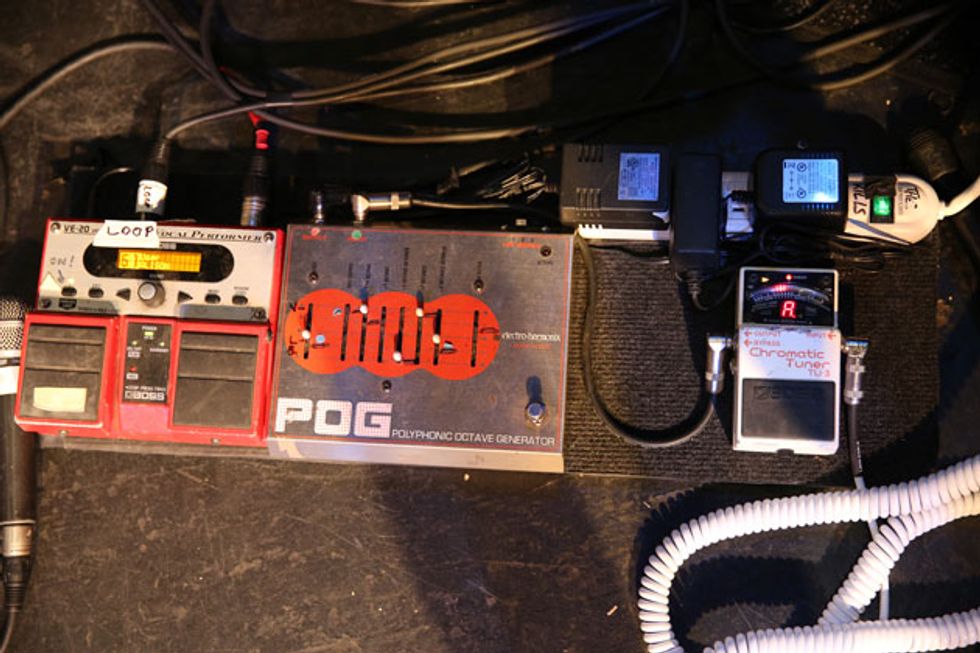
Mosshart’s pedalboard is small and straightforward: a Boss VE-20 Vocal Performer to loop vocals live on a few songs, a first-generation Electro-Harmonix POG, and a Boss TU-3 Chromatic Tuner.





![Rig Rundown: AFI [2025]](https://www.premierguitar.com/media-library/youtube.jpg?id=62064741&width=1245&height=700&quality=70&coordinates=0%2C0%2C0%2C0)








 Zach loves his Sovtek Mig 60 head, which he plays through a cab he built himself at a pipe-organ shop in Denver. Every glue joint is lined with thin leather for maximum air tightness, and it’s stocked with Celestion G12M Greenback speakers.
Zach loves his Sovtek Mig 60 head, which he plays through a cab he built himself at a pipe-organ shop in Denver. Every glue joint is lined with thin leather for maximum air tightness, and it’s stocked with Celestion G12M Greenback speakers.























![Devon Eisenbarger [Katy Perry] Rig Rundown](https://www.premierguitar.com/media-library/youtube.jpg?id=61774583&width=1245&height=700&quality=70&coordinates=0%2C0%2C0%2C0)













